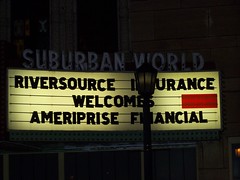In the old days, this would have been the grounds for an antitrust suit
There have been at least two Federal antitrust actions over the past 80 years that have ended up having terrible unintended consequences for cities.
The first was the act requiring utilities to divest transit systems. For the most part electrical generating companies were created to power transit systems (and to provide electricity to other industrial users), which were big users of electricity. As the utility network infrastructure was built out it became cost-effective to provide electricity to homes. Because of the failure of the biggest utility holding company during the Depression, the Public Utility Holding Company Act of 1935. was passed.
By this time, electricity generating companies made much more money from houses than from streetcar systems, especially with the rise of the automobile. So they got rid of the transit side of the business.

Georgia Power streetcar ads. From Electric Traction magazine, 1927, in an article on transit marketing.
After WWII, after many years of discussion, politics, and pushback from the Film industry, the motion picture industry was required to sell off their theater chains, in the case United States v. Paramount Pictures, Inc., 334 US 131 (1948)

In part for marketing and other reasons, the motion picture companies had built fabulous movie theaters in center cities. These theaters were anchors for commercial districts. And the cost of running theaters was high, especially back then, when people saw movies many times each week (because there were limited competing entertainment options back then). Since the cost of running the theater was high, it was useful that motion picture companies owned the theaters and could subsidize them somewhat. (I know, I know, about being able to pay your own way...)
Note that I recognize that there were many other reasons why these commercial districts declined, but this was a contributing factor. If you want to read a great book on movie theaters, I recommend Professor Douglas Gomery's (of University of Maryland) Shared Pleasures: A History of Movie Presentation in the United States.
According to Wikipedia:
The Court held in this case that the existing distribution scheme was in violation of the antitrust laws of the United States, which prohibit certain exclusive dealing arrangements.
The case is important both in U.S. antitrust law and film history. In the former, it remains a seminal decision in vertical integration cases; in the latter, it is seen as the first nail in the coffin of the old Hollywood studio system.
Note that even today, the system of clearances, and the rise of very large super-regional and national movie theater chains, not to mention the creation of bigger and bigger cinema complexes, has created additional barriers that make independent movie theater operation almost impossible.
So how is it that Live Nation can construct the same kind of vertically integrated operation in the music industry, comparable to the old studio system, described by Wikipedia as:
(a) producing movies primarily on their own filmmaking lots with creative personnel under often long-term contract and (b) pursuing vertical integration through ownership or effective control of distributors and movie theaters, guaranteeing additional sales of films through manipulative booking techniques.
See "The rise of concert promoter Live Nation: The rap star Jay-Z is the latest artist to ditch his traditional record label in favour of an all-embracing deal with a concert promoter that is transforming the industry," from the Independent.
This also impacts commercial districts, as locally-owned concert venues find it much more difficult to book acts. These venues may get sold to companies like Live Nation or they close. And more of the money produced by the acts is repatriated outside the community, rather than stays within the community (multiplier effect).
The blog entry "Music and Urbanity" discusses this more, and includes links to other relevant blog entries.
Other entries that touch on all these issues are "Independents and chains in concert promotion," which has a subsection of today's problems of independent cinema operators, and "Decentralization and localism vs. the nationalization of markets."

The Suburban World theater, Uptown District, Minneapolis, no longer shows films.
When I was a child, we still had neighborhood theaters in our commercial districts in Detroit. I remember seeing the movie The Green Slime (1969) in one of them, and some Mexican-American Western, don't remember the title, but I do remember the shot of a man and woman in bed, with some nudity, a couple years later...
Labels: arts-based revitalization, law and the legal process, music-entertainment, urban revitalization



0 Comments:
Post a Comment
<< Home